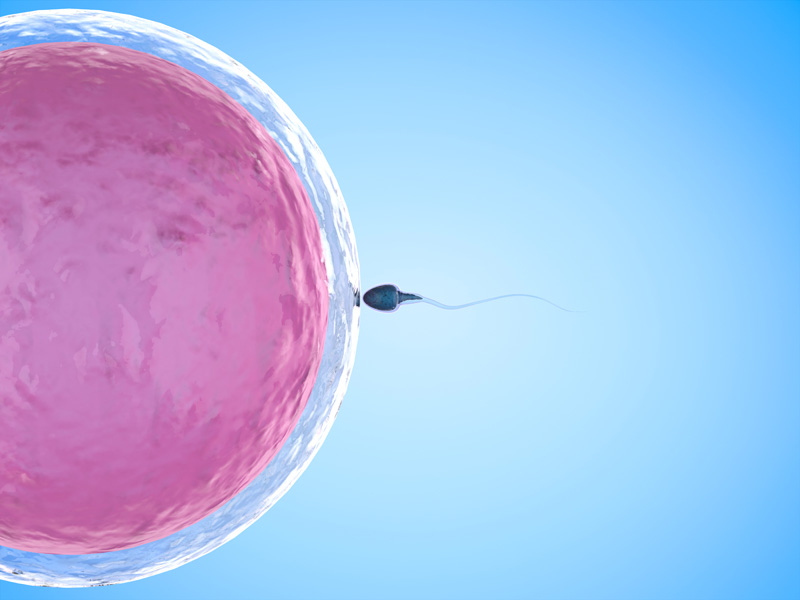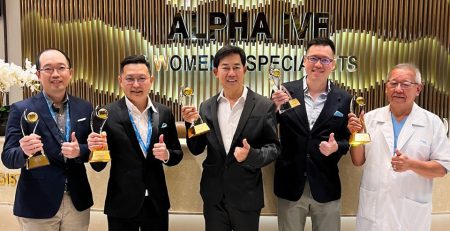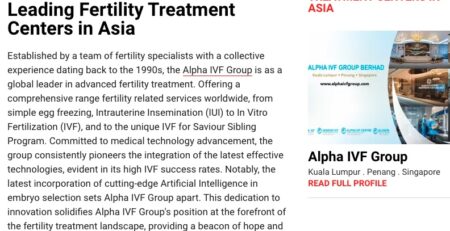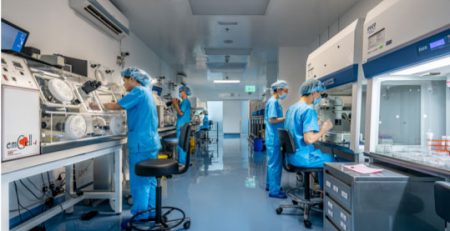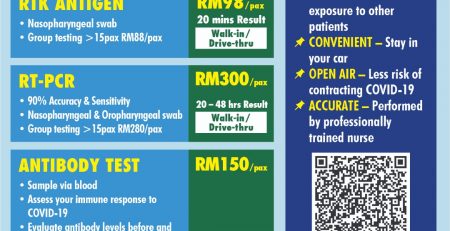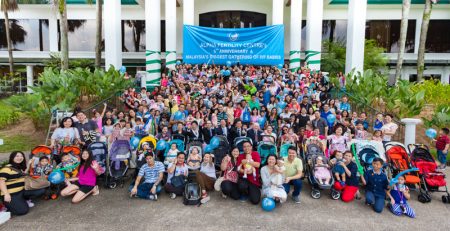Driving Toward 100% Success Rate in Preimplantation Genetic Screening in Malaysia
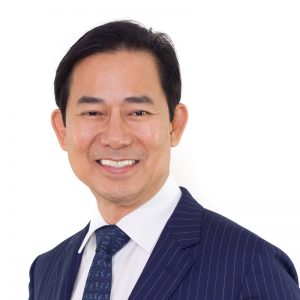 Dr. Colin Lee Soon Soo is a gynecologist and fertility specialist at the Alpha Fertility Centre in Selangor, Malaysia. Dr. Lee’s interest in preimplantation genetic screening (PGS) and fertility has led to more than 100 scientific publications over the years. The discussion below touches on current challenges for in vitro fertilization (IVF) research and how Dr. Lee’s team addresses them.
Dr. Colin Lee Soon Soo is a gynecologist and fertility specialist at the Alpha Fertility Centre in Selangor, Malaysia. Dr. Lee’s interest in preimplantation genetic screening (PGS) and fertility has led to more than 100 scientific publications over the years. The discussion below touches on current challenges for in vitro fertilization (IVF) research and how Dr. Lee’s team addresses them.
Today’s challenges in PGS
Thermo Fisher Scientific: As a leader of preimplantation genetic screening research in Malaysia, can you share how you view PGS, and what challenges exist today?
Lee: At the Alpha Fertility Centre, we are working to be at the forefront of preimplantation genetic screening research. We are not a large centre, with about 1,100 fresh cycles run last year. What we are noticing is that many of the people we see choose to have PGS after they receive full counseling regarding the pros and cons of such testing; when people are made aware of what PGS offers, a majority of them choose it. For example, in the last four months, 70% of our participants undergoing egg pickup have opted for PGS. That’s very encouraging.
However, increasing interest comes with several challenges. First, there is a lack of awareness around the need for preimplantation genetic screening, not just among patients, but among many doctors as well. For instance, if I told you that among certain age groups, as many as 90% of the eggs are chromosomally abnormal, you may not believe me. It is difficult for anyone to accept that, including doctors. That is a big hurdle to overcome in terms of awareness and education.
A second challenge is ensuring the reliability of results: that when we say the embryo is abnormal, it really is abnormal. We as clinical researchers are developing a better understanding that an abnormal embryo will have a certain degree of mosaicism. We now realize that many of these embryos actually “self-correct”, resulting in a normal baby. While the sensitivity and specificity of PGS technology is improving, more work is still being done to help ensure healthy outcomes.
The third challenge I would raise is about cost. As it stands, the technology is still fairly expensive. It is not just the screening process itself that costs money. In my view, preimplantation genetic screening is best implemented in an elective, frozen embryo transfer protocol. That too costs additional money and time for the patient. So awareness and education, refinements in the technology, and cost are three big hurdles that the field still needs to address.
Moving to next-generation sequencing (NGS)
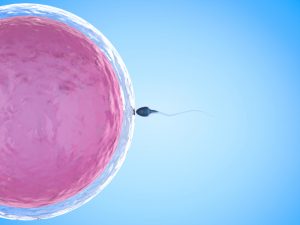 Thermo Fisher: You mentioned the sensitivity and specificity of PGS technology as a challenge. What are the technologies you have used for PGS?
Thermo Fisher: You mentioned the sensitivity and specificity of PGS technology as a challenge. What are the technologies you have used for PGS?
Lee: We started preimplantation genetic screening in 2004, and that time was the era of fluorescence in situ hybridization (FISH) and also the era where most people did their biopsy on day 3 embryos. Of course, we now know the limitations of those two things. We then moved on to microarray comparative genomic hybridization (CGH). In fact, we were the first in Asia and Australia to use microarray CGH with fresh transfer in 2009. We started doing all that when the microarray CGH technology became available, which was also in 2009. Then, three years ago we moved on to next-generation sequencing (NGS) using the Ion Torrent™ system.
Thermo Fisher: What impact has NGS had on your work?
Lee: Before we switched to NGS, we were using microarray CGH, which basically detects aneuploidy copy number variation. Many people who require PGS present with thalassemia. As such, those cases would need another PCR method, typically Sanger sequencing. Another challenge was that initially they would require two biopsies, and we know that has negative effects on the viability of the embryo or blastocyst.
As our understanding grew, we saw the need for increased use of preimplantation genetic diagnosis (PGD). That is one of the main reasons we chose the Ion Torrent system; we can do PGS and PGD using a single biopsy sample on a single platform. We spare the embryo or the blastocyst a double biopsy. It also saves time since these two things are done simultaneously. Further, the entire workflow process is optimized. In fact, we are now starting to do human leukocyte antigen (HLA) typing in addition to PGD and PGS—all on the same biopsy sample.
Thermo Fisher: How did you go about selecting an NGS system? What criteria were important to you?
Lee: First and foremost, I think the reliability of the system is critical. So, we looked at the sensitivity and specificity to be sure that results obtained are accurate. Another key consideration is the cost of setting up the system and not just that, the cost to run a sample. We have to align that to the number of samples that we expect to run.
The complexity of using the system, the complexity of the machine, the complexity of the labor, and the amount of labor that is needed are considerations. Another important benchmark that I looked at before we made a decision is the flexibility of what this system can do: the capability of extending beyond just screening to diagnosis, and as I mentioned earlier, the ability to do HLA typing as well.
One more point is that in addition to copy number variations, we also want a system that can tell us about chromosomal aberration. Evidence is coming out that chromosomal aberrations can also contribute to a failure of either implantation or causing early miscarriages. So, when I consider buying a system, one of the things to consider is whether the system is able to help us in reporting chromosomal aberrations because it is something that we are gaining a better understanding of now, and will continue to research in the years to come.
Thermo Fisher: What do you like about Ion Torrent NGS?
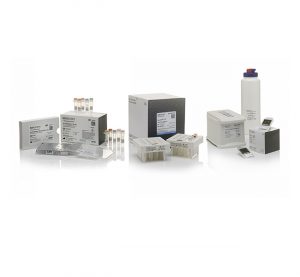 Lee: We have been using Ion Torrent NGS now for about three years. The result are clear. We don’t have many ambiguous or questionable results. That is something we like. The scalability of the system is good, and as our experience with the system increases, so does our confidence in the results we obtain. I’m sure that confidence is evident when we discuss results. So, the volume that we expected to run before we bought the Ion Torrent systemhas been far exceeded.
Lee: We have been using Ion Torrent NGS now for about three years. The result are clear. We don’t have many ambiguous or questionable results. That is something we like. The scalability of the system is good, and as our experience with the system increases, so does our confidence in the results we obtain. I’m sure that confidence is evident when we discuss results. So, the volume that we expected to run before we bought the Ion Torrent systemhas been far exceeded.
Flexibility and scalability are important to our lab. Using Ion Torrent NGS, we’re able to add PGD onto PGS. Recently, we’ve been very excited about being able to add HLA typing onto the platform as well, so we can get results for three things at once.
Thermo Fisher: How did you implement NGS?
Lee: We were using microarray CGH and we obviously did not stop doing microarray CGH to switch to NGS completely. What we did was a sensible thing. We actually ran the two systems at the same time, and as we gained confidence in the new system, we slowly phased out the old one. So today, we have completely phased out microarray CGH and we are using NGS exclusively.
Thermo Fisher: What advantages does the Ion ReproSeq™ PGS Kit give you over other methods you’ve tried?
Lee: We compared two methods in the past. For FISH, of course, we were using only five probes and occasionally more. I don’t think there is really a comparison. And, if you look at the microarray CGH, we were very happy with it. I think it served our purpose at that time. But as we now are experiencing higher volume, NGS in fact is a little bit cheaper per sample compared to microarray CGH. And, we have made a very important move in the last two years; NGS helps us optimize cost per sample in the area of elective frozen embryo transfer. Of course, the other main advantage is that we were doing PGS, and now we are doing both PGS and PGD. As our confidence in the technology increases, so too does the number of PGD cases we see. Now that we are on more confident footing, we can tell people if they have this problem, we may be able to help.
The future of PGS
Thermo Fisher: What do you think still needs to be done to move our understanding in this field even further forward?
Lee: At this stage, we are able to determine whether an embryo is chromosomally, even genetically normal. Yet, when we transfer that embryo to the womb, we are not able to achieve a 100% pregnancy rate. We are above 80% implantation rate with excellent blastocysts in frozen cycles. That gap needs to be filled with evolving technologies, methodologies, and techniques in the clinic, in the laboratory, and in the transfer room. We hope to narrow that gap as much as it is possible. I suppose we will never reach 100%, but we would certainly want to get very close to that.
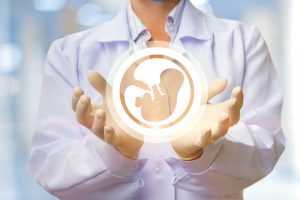 Thermo Fisher: What about this work drives you and gives you the greatest satisfaction?
Thermo Fisher: What about this work drives you and gives you the greatest satisfaction?
Lee: The bottom line is that we want to see a couple having a positive result, which is the delivery of a healthy child. And in that process, we want to provide a new hope using a new technology, a new form of treatment that can give patients success where previously that wasn’t achievable.
Thermo Fisher: How do you think your research will impact future generations?
Lee: One of the things we are doing now is demonstrating the potential use of apronuclear (0PN)- and unipronuclear (1PN)-derived embryos. Based on our findings, we noticed, if the 0PN and 1PN develop into morphologically normal-looking embryos or blastocysts (as defined by decent quality or morphological assessment using an embryo-grading system), these embryos will share similar euploid rates as those derived from 2PN embryos. We have already published data proving it and will continue to demonstrate this with more data. This continuing research will impact the basic practice of IVF around the world as 0PN and 1PN will no longer be thrown away. This will help to expand the opportunities for quite a few people.
*Original article here.

